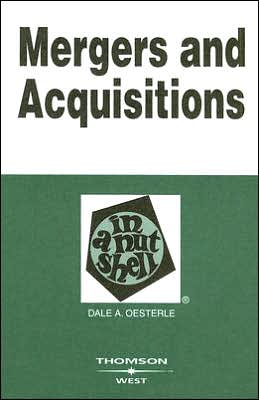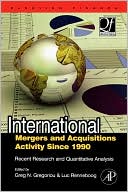Financial Institutions, Valuations, Mergers, and Acquisitions: The Fair Value Approach
THE DEFINITIVE GUIDE TO NAVIGATING TODAY'S FINANCIAL SERVICES INDUSTRY\ From "one-stop shopping" for financial services to major structural shifts within the industry, rapid changes in information technology, trends toward business combinations, statutory laws, and global competition have contributed to breaking down the geographic and product barriers that once separated traditional financial institutions from other financial entities. This complete authoritative resource is designed for all...
Search in google:
Over the past decade, substantial changes have taken place in the structure and range of products and services provided by the financial services industry. These changes have transformed both traditional organizations such as banks, thrifts, and insurance companies, as well as securities providers, asset management companies, and financial holding companies. More than ever, CEOs, CFOs, CPAs, attorneys, bankers, officers in financial institutions, and business appraisers are involved in various stages of the business valuation, merger, and acquisition process. Written by an expert in the field, Financial Institutions, Valuations, Mergers, and Acquisitions provides critical guidance for those who are participating in this process. This book is an authoritative source in the areas of consolidation, convergence, competition, deregulations, accounting standards, technological advances, and tax rules as they pertain to the valuation process as well as the due diligence practices for mergers and acquisition deals.At once a beneficial primer for those with a cursory knowledge of banking, valuation, and mergers and a useful reference for seasoned professionals, this book helps you understand the valuation and mergers and acquisition areas of the financial services industry.* Focuses on the impact of geographic and product deregulations, accounting standards, and global competition on future consolidation and convergence in the financial services industry* Covers global banking services and their relevance to international accounting principles for the U.S. financial services industryTake advantage of this invaluable resource to help you keep up with-and benefit from-the exciting changes in this important industry. Booknews In light of the substantial changes in the structure and range of products and services provided by the financial services industry over the past decade, Rezaee (accounting, Middle Tennessee State U.) explains to officers in and consultants to financial institutions new considerations in the valuation, merger, and acquisition of such institutions. He attempts to integrate on- line, fair value valuation techniques into the due diligence process and practices for internal and external assessment and for merger and acquisition deals. He has revised and updated the 1995 first edition. Annotation c. Book News, Inc., Portland, OR (booknews.com)
Chapter 1: Introduction to Financial Institutions\ 1.1 Introduction\ The past decade has witnessed significant changes in the structure, characteristics, and types of products and services provided by the financial services industry. The most significant changes were in three areas: consolidation, convergence, and competition. These changes, which are expected to continue to occur at a higher speed in the future, have been motivated and caused by a number of factors and forces, including deregulation, globalization of business, geographic expansion, highly valued stock prices, product line expansion, technological advances, relatively low interest rates, and considerable economic stability and growth. Consolidation, convergence, and competition have transformed the financial services industry from traditional organizations such as banks, brokers, insurance companies, mutual funds, and securities providers to asset management companies such as bank holding companies and financial holding companies.\ The structure and characteristics of banks and banking organizations are changing from traditional brick-and-mortar branches to universal banking, PC-banking, and Internet banking. Until recently, customers could not do one-stop shopping for all of their financial services, and very little shopping at all for financial services. The range of options often was limited by geographic restrictions, product limitations, and even inefficiencies, cost, and time-consuming searches for the best option. The majority of households and businesses used local banks within 20 miles for their financial service needs because of availability, convenience, and personalized banking relationships. Today, financial holding companies are developed to provide the opportunity for onestop shopping for all financial services and products, including checking and saving accounts, loans, asset management, insurance, and investment services, as well as unlimited efficiency in finding the best financial services at the lowest cost nationwide or even across international borders. For example, customers now can easily find information about loans or mortgages on-line by visiting eloan.com or loanweb.com sites. This information efficiency offered to customers through e-commerce and Internet banking, coupled with the creation of financial holding companies, would accelerate the financial services movement toward commoditization. The new information technology not only empowers customers to shop for their financial services easily and effectively but also provides opportunities for competitors to identify, match, and duplicate any innovative financial services.\ Financial institutions are also facing numerous challenges caused by the rapid changes occurring in information technology, trends toward business combinations, statutory laws, marketplace, global competition, and accounting standards. Traditionally, financial services provided by banks, insurance companies, and mutual funds and their roles have been somewhat separated. Today, the differences between functions of these financial services provided by entities in the financial services industry are becoming less noticeable. Entities in the financial services industry are classified in this book as: (1) banks and thrifts; (2) finance companies; (3) securities and investments companies; and (4) insurance companies. Exhibit l . l shows the composition of the financial services industry's previously used standard industrial classification (SIC) code along with the new classification coding system, called the North American Industry Classification System (NAICS) for entities in the financial services industry.\ Many of the traditional barriers including both geographic (e.g., interstate banking) and products (e.g., a variety of financial services) that once had separated banks from insurance companies, mutual firms, or investment funds are now diminishing in the financial services industry. Thus, the ever-changing nature, structure, and competition in the financial services industry have currently received great attention primarily because of the recent elimination of geographic barriers and product barriers especially those that related to cross-industry mergers and affiliations. The passage of the Gramm-Leach-Bliley Act of 1999 (hereafter, GLB) will significantly increase the number and size of mergers within the financial services industry...
AcknowledgmentsPrefacePt. IThe Foundation: Financial Institutions, Valuations, Mergers, Acquisitions, Regulatory and Accounting Environment1Ch. 1Introduction to Financial Institutions3Ch. 2Overview of the Valuation Process38Ch. 3Overview of Mergers and Acquisitions73Ch. 4Regulatory Environment and Financial Reporting Process of Financial Institutions111Pt. IIFundamentals of Valuations: Concepts, Standards, and Techniques163Ch. 5Value and Valuation: A Conceptual Foundation165Ch. 6Approaches to Measuring Value177Ch. 7Valuations for Tax and Accounting Purposes213Ch. 8Intangible Asset Valuation223Pt. IIIAssessment of Financial Institutions233Ch. 9Financial Analysis of Banks and Bank Holding Companies235Ch. 10Internal Characteristics Assessment280Ch. 11External Environment Assessment294Pt. IVValuation of Mergers and Acquisitions301Ch. 12The Bank Merger and Acquisition Process303Ch. 13Accounting Standards on Mergers and Acquisitions315Ch. 14Valuing a Bank as a Business Enterprise333Ch. 15Valuation of Tangible Bank Assets363Ch. 16Core Deposits as a Special Type of Intangible Asset Valuation370Ch. 17Derivative Financial Instruments388Ch. 18Real World Bank Valuation Complications414
\ BooknewsIn light of the substantial changes in the structure and range of products and services provided by the financial services industry over the past decade, Rezaee (accounting, Middle Tennessee State U.) explains to officers in and consultants to financial institutions new considerations in the valuation, merger, and acquisition of such institutions. He attempts to integrate on- line, fair value valuation techniques into the due diligence process and practices for internal and external assessment and for merger and acquisition deals. He has revised and updated the 1995 first edition. Annotation c. Book News, Inc., Portland, OR (booknews.com)\ \








